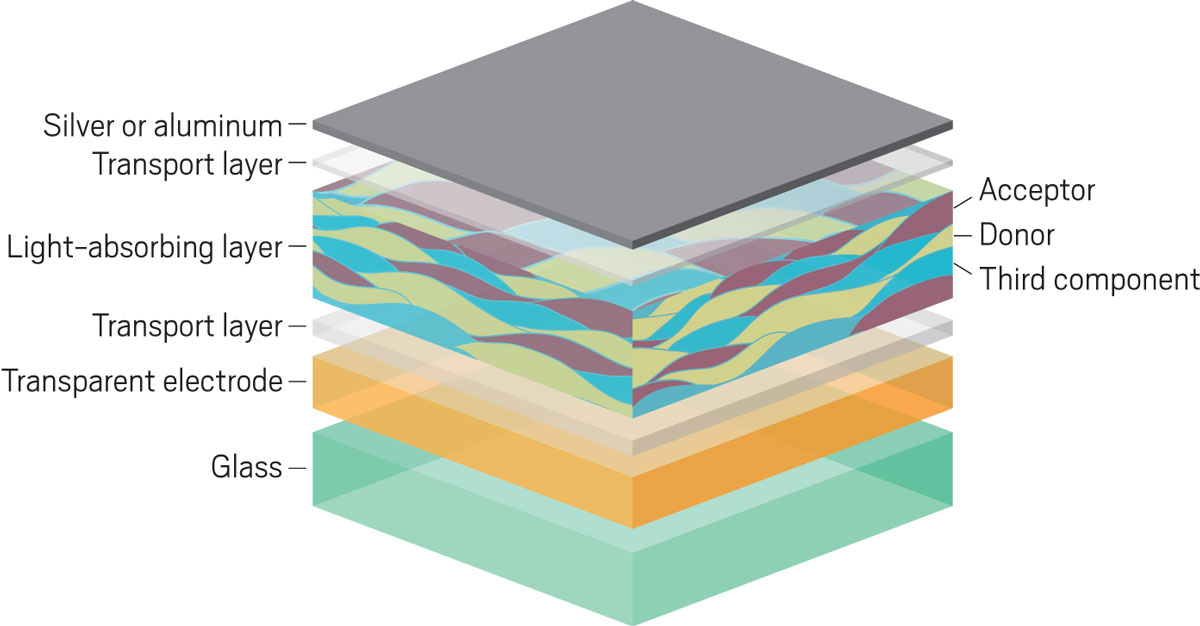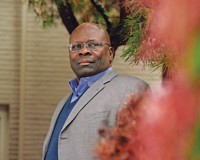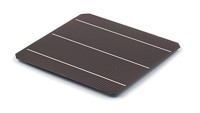Advertisement
Grab your lab coat. Let's get started
Welcome!
Welcome!
Create an account below to get 6 C&EN articles per month, receive newsletters and more - all free.
It seems this is your first time logging in online. Please enter the following information to continue.
As an ACS member you automatically get access to this site. All we need is few more details to create your reading experience.
Not you? Sign in with a different account.
Not you? Sign in with a different account.
ERROR 1
ERROR 1
ERROR 2
ERROR 2
ERROR 2
ERROR 2
ERROR 2
Password and Confirm password must match.
If you have an ACS member number, please enter it here so we can link this account to your membership. (optional)
ERROR 2
ACS values your privacy. By submitting your information, you are gaining access to C&EN and subscribing to our weekly newsletter. We use the information you provide to make your reading experience better, and we will never sell your data to third party members.
Electronic Materials
Derya Baran
Solar power innovator is creating organic materials for cheaper, more efficient photovoltaics
by Mark Peplow, special to C&EN
August 20, 2021
| A version of this story appeared in
Volume 99, Issue 30

Credit: Anastasia Serin/KAUST (Baran, soap bubble); Daniel Bryant (solar window)
Derya Baran began her life in a small village in Turkey and was soon captivated by wanderlust. “When I was younger, I always wanted to go abroad,” she recalls. “Then I got to university and learned that academic life involves travel. You see other countries, you could do science, and I always had a desire to learn.”
She has been traveling, and learning, ever since. Now an associate professor at the King Abdullah University of Science and Technology (KAUST) Solar Center in Saudi Arabia, Baran develops organic photovoltaics and other energy conversion technologies that could broaden access to solar power. Organic photovoltaics rely on thin films of light-absorbing organic molecules that can be printed onto flexible substrates using roll-to-roll manufacturing, potentially making them less resource intensive than conventional silicon cells. “Our passion is to come up with new materials that can utilize sunlight more efficiently or cheaper,” she says. “It’s not just silicon that will power up the whole world.”
Advertisement
After earning her PhD at Friedrich Alexander University Erlangen-Nuremberg, Baran spent part of her postdoc working at Imperial College London with polymer chemist Iain McCulloch, who was on the committee that evaluated Baran’s doctoral work. “I remember reading her thesis and thinking I’d really like to hire this person—they’ve got a really interesting perspective on the science that they’re doing,” McCulloch says.
Organic photovoltaics usually contain a light-absorbing polymer that donates an excited electron to an acceptor molecule, ultimately generating a current. Many of the previously most successful organic photovoltaics used fullerene-based acceptors, but McCulloch says that by 2015, those cells’ performance improvements had plateaued, and people were beginning to lose faith in their commercial prospects.
In McCulloch’s lab, Baran pioneered the use of a nonfullerene acceptor molecule called IDTBR. Unlike fullerene acceptors, IDTBR can absorb light and contribute to the current generated by an organic photovoltaic cell, boosting its efficiency. The team also found that blending a second acceptor molecule with a donor polymer and IDTBR—forming a so-called ternary cell—further improved the cells’ performance because each component could absorb different parts of the solar spectrum.

The strategy has reinvigorated the field, says McCulloch, who was until recently the director of the KAUST Solar Center and is now at the University of Oxford. “The performance increases over the past 5 years or so have been remarkable, and Derya is one of the key researchers behind that.”
McCulloch got his chance to hire Baran in 2017, when he helped recruit her to KAUST. As an independent researcher, she has continued to develop nonfullerene acceptor materials. In 2018, she launched a start-up called Iyris, which is integrating organic photovoltaics into greenhouse windows, specifically for farming in hot climates. Molecules in the transparent solar cells are designed to absorb infrared light, generating power and preventing the greenhouse from overheating, while allowing visible light to reach the plants beneath. The same technology could also be applied to skyscrapers to reduce the need for energy-intensive air-conditioning. “She always considers the bigger implications of her work,” McCulloch says, “so it’s no coincidence she’s now tackling big problems—energy and food security, these are huge societal issues.”
More recently, Baran has been developing a lightweight organic photovoltaic that can be created by inkjet printing. “It’s so light, it can sit on a soap bubble,” Baran says. That could make the cells useful for powering wearable electronic devices used in health monitoring or diagnostics.
Baran is also committed to educating the next generation of female scientists in Saudi Arabia, a country that has long placed restrictions on women’s lives. “I think at KAUST, we are really helping to build that capacity,” she says. “That’s a pretty good feeling.”
Vitals
Current affiliation: King Abdullah University of Science and Technology
Age: 36
PhD alma mater: Friedrich Alexander University Erlangen-Nuremberg
Hometown: Kanlıca, Turkey
If I were an element, I’d be: Oxygen. “Vital, yet you would not realize it is there. Loves to pair up, and reactive and sparky.”
Role model: “My mum. She was a single mom and so influential in getting a scholarship for my studies and to go abroad. She was inspired to go to university after me—we graduated together once I was done with my PhD.”
Derya Baran began her life in a small village in Turkey and was soon captivated by wanderlust. “When I was younger, I always wanted to go abroad,” she recalls. “Then I got to university and learned that academic life involves travel. You see other countries, you could do science, and I always had a desire to learn.”
She has been traveling, and learning, ever since. Now an associate professor at the King Abdullah University of Science and Technology (KAUST) Solar Center in Saudi Arabia, Baran develops organic photovoltaics and other energy conversion technologies that could broaden access to solar power. Organic photovoltaics rely on thin films of light-absorbing organic molecules that can be printed onto flexible substrates using roll-to-roll manufacturing, potentially making them less resource intensive than conventional silicon cells. “Our passion is to come up with new materials that can utilize sunlight more efficiently or cheaper,” she says. “It’s not just silicon that will power up the whole world.”
Vitals
Current affiliation: King Abdullah University of Science and Technology
Age: 36
PhD alma mater: Friedrich Alexander University Erlangen-Nuremberg
Hometown: Kanlıca, Turkey
If I were an element, I’d be: Oxygen. “Vital, yet you would not realize it is there. Loves to pair up, and reactive and sparky.”
Role model: “My mum. She was a single mom and so influential in getting a scholarship for my studies and to go abroad. She was inspired to go to university after me—we graduated together once I was done with my PhD.”
After earning her PhD at Friedrich Alexander University Erlangen-Nuremberg, Baran spent part of her postdoc working at Imperial College London with polymer chemist Iain McCulloch, who was on the committee that evaluated Baran’s doctoral work. “I remember reading her thesis and thinking I’d really like to hire this person—they’ve got a really interesting perspective on the science that they’re doing,” McCulloch says.
Organic photovoltaics usually contain a light-absorbing polymer that donates an excited electron to an acceptor molecule, ultimately generating a current. Many of the previously most successful organic photovoltaics used fullerene-based acceptors, but McCulloch says that by 2015, those cells’ performance improvements had plateaued, and people were beginning to lose faith in their commercial prospects.
In McCulloch’s lab, Baran pioneered the use of a nonfullerene acceptor molecule called IDTBR. Unlike fullerene acceptors, IDTBR can absorb light and contribute to the current generated by an organic photovoltaic cell, boosting its efficiency. The team also found that blending a second acceptor molecule with a donor polymer and IDTBR—forming a so-called ternary cell—further improved the cells’ performance because each component could absorb different parts of the solar spectrum.
The strategy has reinvigorated the field, says McCulloch, who was until recently the director of the KAUST Solar Center and is now at the University of Oxford. “The performance increases over the past 5 years or so have been remarkable, and Derya is one of the key researchers behind that.”
McCulloch got his chance to hire Baran in 2017, when he helped recruit her to KAUST. As an independent researcher, she has continued to develop nonfullerene acceptor materials. In 2018, she launched a start-up called Iyris, which is integrating organic photovoltaics into greenhouse windows, specifically for farming in hot climates. Molecules in the transparent solar cells are designed to absorb infrared light, generating power and preventing the greenhouse from overheating, while allowing visible light to reach the plants beneath. The same technology could also be applied to skyscrapers to reduce the need for energy-intensive air-conditioning. “She always considers the bigger implications of her work,” McCulloch says, “so it’s no coincidence she’s now tackling big problems—energy and food security, these are huge societal issues.”

More recently, Baran has been developing a lightweight organic photovoltaic that can be created by inkjet printing. “It’s so light, it can sit on a soap bubble,” Baran says. That could make the cells useful for powering wearable electronic devices used in health monitoring or diagnostics.
Baran is also committed to educating the next generation of female scientists in Saudi Arabia, a country that has long placed restrictions on women’s lives. “I think at KAUST, we are really helping to build that capacity,” she says. “That’s a pretty good feeling.”.




















Join the conversation
Contact the reporter
Submit a Letter to the Editor for publication
Engage with us on Twitter